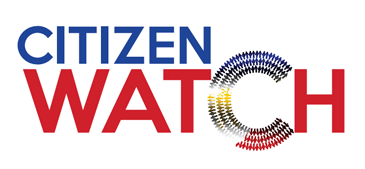Under-implemented Rare Disease Law
March 27, 2023originally published in The Manila Standard
The European Union defines a disease as rare when fewer than 1 in 2,000 people within a general population is affected.
On the other hand, Pharmaceutical industry data estimates that, collectively, there are 400 million people suffering from rare disease and there are 7,000 different rare diseases, which seems not so rare as these figures are even higher than global cancer statistics.
Rare disease patients are among millions who experienced dangerous delays and even deprived access to life saving treatments because of supply disruptions and healthcare facilities and manpower that were redeployed to fight the pandemic – a sad consequence that reflects what the Department of Health has admitted is the country’s “disjointed” public health system that needs to be addressed with urgency.
In last week’s Stratbase ADR institute’s hybrid forum organized in partnership with UHC Watch and the Philippine Society of Orphan Disorders, implementation gaps of Rare Disease Act (Republic Act 10747), passed in 2016, were aired by patient groups, health advocates, and the DOH.
Stratbase ADRi president, Prof. Victor Andres “Dindo” Manhit. in his opening statement pointed out after seven years since the law’s passage, patients and other stakeholder groups are still clamoring for government support in terms of adequate funding and proper implementation of the Integrated Rare Diseases Management Program Strategic Plan.
“The challenges of rare disease patients continue and need to be addressed — among these are the institutionalization of government support, increase access to available services and expansion of the scope of the rare diseases which is aligned with the Rare Disease Law,” Prof Manhit said.
The Role of the DOH as the lead agency was emphasized by UHC Watch Healthcare and Education Convenor, Alvin Manalansan.
In particular, he appealed for a faster Health Technology Assessment process for rare disease health technologies and to explore innovative financing mechanisms that will support patients in accessing diagnostic services and treatment.
Pharmaceutical and Healthcare Association of the Philippines Healthcare Policy Director Lourdes Desiree Cembrano raised the need to raise public awareness pointing to low understanding, the limited capacity for detection and management, and the lack of tools for patient navigation and registries.
Among her recommendations were for stakeholders to engage in quad-media campaigns, continuing medical education across various healthcare professionals, and to establish a rare disease community for patient navigation mechanisms.
Ms. Cembrano stressed on the need to have more agility and flexibility in regulatory processes citing US PhRMA data showing only 11 percent of new medicines are made available in the Philippines with a delay of three years.
She appealed for an expedited FDA registration pathway and ‘Green lanes’ for Bureau of Customs release.
Philippine Society for Orphan Disorders President Ms. Cynthia Magdaraog expressed hope with the development of new technologies and medicines and vowed to initiate more engagements to access financial and psychological support for families living with rare disease.
Dr. Manuel V. Vallesteros, DOH Division Chief of Disease Prevention and Control Bureau-Child, Adolescent and Maternal Health. said they will be developing a life stage-based medium term strategic plan to integrate all existing strategies including the rare disease program.
“The DOH will ensure the proactive engagement with the concerned institutes of the University of the Philippines – National Institutes of Health and various medical societies to help us jumpstart the development of Clinical Practice Guidelines” Dr. Vallesteros said.
Scoliosis Philippines Support Group Inc. Founder and President, Amanda Bonife-Kiamko discussed the value of partnerships with various government agencies, private sector, and other NGOs in conducting patient empowerment, capacity building, strategic planning, and policy workshops.
She cited PAPO’s recommendations to have a citizen representative from the patient groups, and representatives from local health workers in the HTA Council. Furthermore, there should be a separate track for HTA process on rare diseases and cancers, and continued education and capacity building to be able to submit topic nomination.
Dr. Celeste Mae Campomanes of the Philippine College of Chest Physicians said what is needed now is to arm our general practitioners and other doctors to entertain the possibility of Interstitial Lung Disease so that they can refer patients to specialty centers.
Dr. Marita Tolentino-Reyes, Chairperson of the HTA Council identified challenges on the prioritization of rare diseases such as the lack of local data on burden of illness, healthcare costs, unharmonized list of international and local rare diseases, lack of local studies on clinical efficacy, effectiveness and safety, high costs of innovative drugs, and the lack of data on prevalence and access to care in subpopulations.
The unanimous consensus or the forum is to proceed with the organization of a “Rare Disease Coalition” to campaign for adequate funding and to ensure the implementation of the Rare Disease Act.
As a co-convenor of UHC Watch, we call on our legislators support this important law with enough budget allocation to enable the DOH to address the challenges raised by rare disease stakeholders in the true spirit of Universal Health Care for all.
